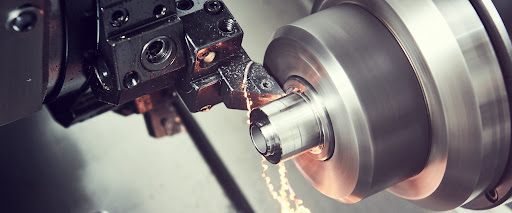A resort manager stopped to observe a carpenter framed a new outbuilding on the land of the resort and was astonished to see the man with a big hammer pounding screws. “What’s that slot in the head, you know?” inquired the manager. “Sure,” the carpenter answered. “If you push it out in the wrong spot, that’s to back it out.”
Sometimes it is a question of opinion that is dubbed the “appropriate instrument for the work.” The idea is that several considerations can be used to select the correct instrument for each particular activity, yet the option is often not immediately apparent.
The right metal parts manufacturing tool.
The casting is analogous to the molding of plastic injections. Aluminum, copper, zinc or other metal alloy is pressed into a die and cooling stain. In rare circumstances, further machining may be necessary to produce threading, improved screening or particular details. Machining can allow various modifications of a single casting as a finishing step.
Classical casting of sand is somewhat more basic than casting. Surface finishes are granular and inconsistencies between the half of the mold and the inserts may require post-processing because of poor casting tolerances. The method is employed in non-cosmetic components such as automotive engine blocks. High-volume applications, such as motor coolant channels, often require post-work to complete the item. Certain design solutions cannot be duplicated into die or CNC processing in sand casting.
For smaller volumes, CNC machining usually uses dozens to a few thousand. It is fast and sensitive and requires no preliminary tools for casting processes. It can also be utilized for the development of prototypes of die-cast or sand-cast parts in addition to limited volume manufacturing, until final design is developed, and tooling can start. It can also be utilized to build production pieces for bridge tools, while tools can be employed to manufacture big volumes.
Determination of the production method Volume
The selection of processes is evident in certain instances. Think tens of thousands and more when you produce a huge volume of components, casting is significantly cheaper. It takes time to make the die, but every cast part may be made rapidly and at relatively cheap incremental costs.
CNC machining, however, produces the first pieces considerably faster and cheaper, but after a certain point there is not such an affordable scale.
In Conclusion.
Consequently, volume is the main consideration when choosing a production method. You should also consider machining when you require tens of prototypes, or hundreds of thousands or some thousands for low-volume manufacturing. Consider casting for 10,000 or more. But a multitude of things can impact your choice between these extremes.
Machining can shorten the time of the machine and scrap output. After judging and determining if Machining is needed, it is important to contact a reputable company for your order. If you seek fabrication with machining in Johor, please contact CFM Technologies.

